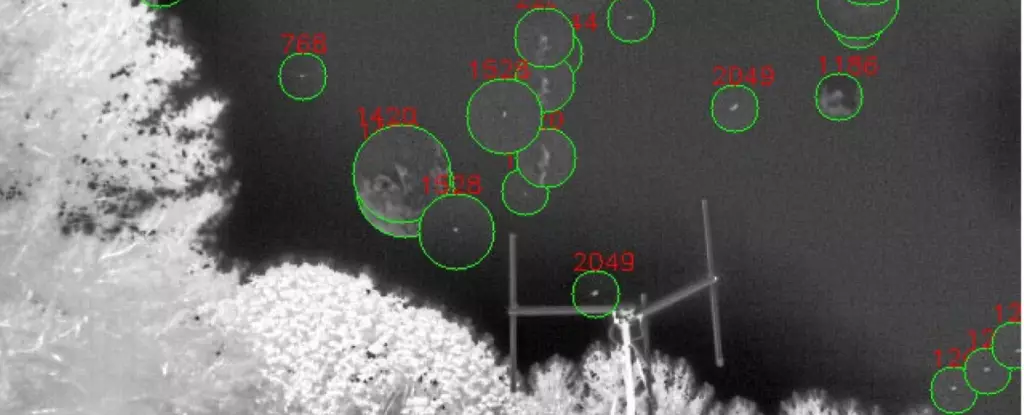The quest for understanding unidentified aerial phenomena (UAP) has reached unprecedented heights in recent years. This interest piqued globally with a 2021 report from the Office of the Director of National Intelligence (ODNI), which released declassified information on UAPs, shedding light on a subject that has long tantalized scientists and the public alike. However, while the Department of Defense continues to churn out annual reports through the All-domain Anomaly Resolution Office (AARO), many enthusiasts and researchers remain frustrated by the lack of scientifically rigorous public data. In response to this ongoing controversy, a collaborative effort led by the Harvard-Smithsonian Center for Astrophysics (CfA) has set its sights on developing an advanced surveillance system aimed at unveiling the truth behind these mysterious sightings.
Introducing the Dalek: A Bold New Tool for UAP Detection
At the forefront of this initiative is a cutting-edge project aptly named “Dalek,” inspired by the iconic antagonists of the beloved *Doctor Who* series. The instrument is conceived as a sophisticated All-Sky Infrared Camera designed to detect potential extraterrestrial spacecraft. Spearheaded by Laura Domine and a team of adept researchers from the CfA, the Galileo Project, Whitin Observatory, and others, the proposal’s primary goal is to construct a system robust enough to collect and analyze a variety of signals—infrared, optical, radio, and audio—simultaneously.
The Dalek project builds on earlier recommendations from NASA, which urged the development of purpose-built sensors capable of rapid adjustments to improve detection capabilities. This collaborative research reflects an insightful acknowledgment that multisensor applications can create a holistic understanding of UAP events. In leveraging advanced technology, Dalek promises unprecedented observatory capabilities that could pave the way for significant findings.
Leveraging Machine Learning for Object Classification
One of the most remarkable aspects of the Dalek initiative is its use of machine learning algorithms. The project employs the “You Only Look Once” (YOLO) model for object detection, coupled with the “Simple Online and Realtime Tracking” (SORT) algorithm—two powerful techniques that allow researchers to sift through vast datasets almost in real-time. As a result, the observatories are poised to detect an estimated 100,000 objects each month, accumulating a monumental database of over a million observed entities classified through machine learning.
This methodology shines not only in quantity but also in its rigor. From its first five months of operation, the observatory reported the detection of around half a million objects. Out of these, about 80,000 trajectories were flagged as outliers, sparking the team’s curiosity for further examination. However, they also encountered a significant challenge: about 144 trajectories remained ambiguous due to a lack of pertinent data. Such scenarios highlight the importance of having comprehensive data sets that encompass distance metrics and sensor comparisons for effective anomaly detection.
The Challenge of Data Interpretation
Professor Avi Loeb, the leader of the Galileo Project, encapsulated a critical issue affecting current UAP research: the frequent classification of government data. The majority of U.S. government data on UAPs often remains undisclosed due to security concerns. Yet, Loeb argues, the sky itself should not be classified. His assertion emphasizes the urgent need for publicly accessible data concerning UAPs to facilitate unbiased scientific inquiry.
The contrast drawn between the findings of the Dalek project and those of classified studies by agencies like AARO is particularly striking. Government studies report that only about 3% of cases remain ambiguous due to the advantages of utilizing radar and multi-sensor input. Meanwhile, the challenge faced by the Dalek initiative illustrates the limitations and subtleties inherent in attempting to draw conclusions based solely on observational data without significant context.
A Glimpse into the Future: Unraveling Technosignatures
The goal of the Dalek initiative is ambitious: to identify technosignatures—possible evidence of advanced extraterrestrial civilizations. As Loeb noted, even one outlier demonstrating capabilities beyond anything we have engineered could usher in a new era of scientific discovery that may redefine our understanding of life beyond Earth.
In a world where interstellar exploration has remained speculative, projects like Dalek amplify hopes that humanity may one day encounter conclusive evidence of intelligent life beyond our own. Such prospects evoke a sense of wonder, curiosity, and urgency—accelerating exploration and fostering a collaborative spirit among scientists, engineers, and enthusiasts alike.
Thus, while significant hurdles remain—be it data transparency, analytical ambiguities, or technological limitations—the Dalek initiative stands as a beacon of innovative thought in the ongoing endeavor to reveal the mysteries of our universe. Its commitment to multi-faceted observation, rigorous data processing, and a clear-eyed focus on the unknown potentially represent the most substantial progress in the UAP research domain. The journey has only just begun, and the skies may soon hold revelations that might change the fabric of humanity’s understanding of its place in the cosmos.

